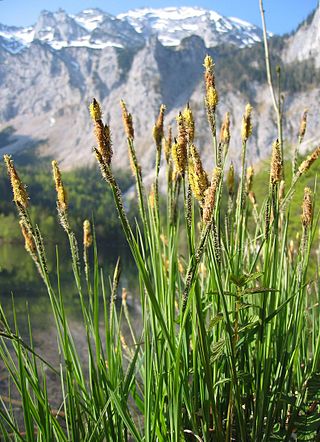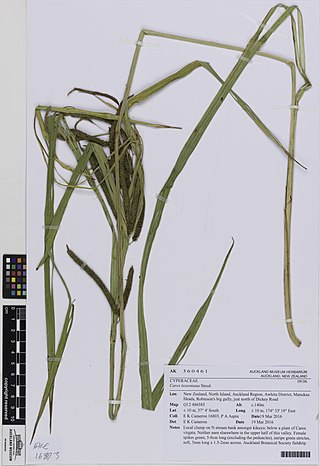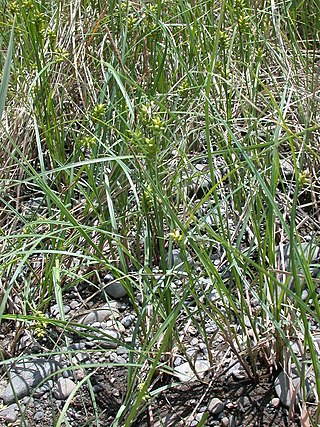
Carex elata, is a species of tussock-forming, grass-like plant in the Cyperaceae family. It is native to all of Europe, the Atlas Mountains of Africa, Turkey, Iran and Central Asia.
Carex aureolensis is a tussock-forming species of perennial sedge in the family Cyperaceae. It is native to temperate parts of the Americas from Illinois in the north to northern Argentina in the south.
Carex basiantha is a tussock-forming species of perennial sedge in the family Cyperaceae. It is native to temperate parts of the south-central and south-eastern United States.
Carex chapmanii is a tussock-forming species of perennial sedge in the family Cyperaceae. It is native to temperate parts of the south-eastern United States.
Carex commixta is a tussock-forming species of perennial sedge in the family Cyperaceae. It is native to temperate parts of the south-eastern Asia and northern Malesia.

Carex dimorpholepis is a tussock-forming species of perennial sedge in the family Cyperaceae. It is native to temperate parts of Asia from Pakistan in the west to Japan in the east.
Carex fecunda is a tussock-forming species of perennial sedge in the family Cyperaceae. It is native to parts of South America.
Carex humboldtiana is a tussock-forming species of perennial sedge in the family Cyperaceae. It is native to parts of Central America and South America.

Carex hyalinolepis is a tussock-forming species of perennial sedge in the family Cyperaceae. It is native to southern parts of North America from Ontario in the north to Texas in the south.

Carex lessoniana, also commonly known as rautahi or cutty grass, is a tussock-forming species of perennial sedge in the family Cyperaceae. It is native to parts of New Zealand.
Carex macrosolen is a tussock-forming species of perennial sedge in the family Cyperaceae. It is native to southern parts of South America..
Carex musei is a tussock-forming species of perennial sedge in the family Cyperaceae. It is native to Réunion island in the Indian Ocean.
Carex nemostachys is a tussock-forming species of perennial sedge in the family Cyperaceae. It is native to eastern parts of Asia.
Carex oligantha is a tussock-forming species of perennial sedge in the family Cyperaceae. It is native to western parts of Asia.
Carex picta is a tussock-forming species of perennial sedge in the family Cyperaceae. It is native to south western parts of North America.
Carex preslii is a tussock-forming species of perennial sedge in the family Cyperaceae. It is native to eastern parts of North America from Alaska in the north to California in the south.

Carex scabrifolia, also known as cao ye tai cao, is a tussock-forming species of perennial sedge in the family Cyperaceae. It is native to eastern parts of Asia.
Carex spilocarpa is a tussock-forming species of perennial sedge in the family Cyperaceae. It is native to Mexico and parts of Central America.
Carex thunbergii is a tussock-forming species of perennial sedge in the family Cyperaceae. It is native to parts of eastern Asia from around Manchuria in the west to Japan in the east. It is found in Primorye to the north to Korea in the south.
Carex trichodes is a tussock-forming species of perennial sedge in the family Cyperaceae. It is native to southern parts of South America.





